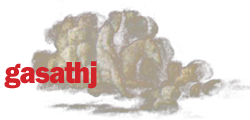Computer generated images created by use of commercial graphics programs are usually recognizable style. In order to achieve different results it is necessary to develop proper software. Installation of commonly known software algorithms in proper programs again does not guarantee diversity. In order to achieve the high diversity of results it is necessary to look for the original methodological approaches and algorithms. My efforts in the recent period focused on finding innovative methods of image processing that ensure that computer origin of pictures could be hidden as much as possible. The following briefly describes the pragmatic approach, multi-level algorithms, diving into the picture, mutation, deformation approach and random mixing of images.
A pragmatic approach is suitable for creating works of art figurative type, showing the objects from the real world. The formation of the image is carried out in three phases. In the first phase, simple geometric shapes representing desired objects are designed and logical places in the space. In the second phase, the objects are filled with tiny colored circles or squares, taking into account the right coloring, shading and depth position. In the third phase, the entire image is processed using the currently selected mode and the end result gives the appearance of images drawn with a brush. (Figure-01).
Figure-01
The multi-level algorithmic approach is characterized by a program built-in multi-level algorithmic structure. At each level there is a set of built-in mathematical expressions and formulas, which are formed more or less intuitive. In these expressions are entering two types of variables: variables which represent the genetic code and are constant for each of the program cycle and variables as a result of the process of drawing which currently change their values. The number of possible types of images is equal to the product of the number of algorithms in each level. Those programs generally draw abstract paintings and any association to the image of the real world is purely coincidental (figure-02).
figure-02
Diving in the image is based on the principle of fractals. After starting, such a program creates a base image which is examined by clicking on the location looking as interesting. Diving into the picture is not usually increase (zoom), because the calculation of the images includes current depth, which partly eliminates the effect of self-similarity, which is characteristic of fractals. The process is like a travelling inside the image and looking for interesting art motifs, which are stored in real time. The exploring of the image could be repeated again on the other location. (figure-03).
figure-03
Next method mutates previously generated images imported into program. New image is not at all similar to image base. Working on the same image base, each mutation cycle creates a different picture that in principle only maintains the color palette. Form and structure of the new pictures are free program creations. Mutational algorithm randomly moves parts of the image which are strongly intertwined and overlapped. The program can also be upgraded with the possibility of generating a random color palette and in this case also the colors are different. In this way, the new image does not maintain nor shades of imported image (figure-04).
figure-04
Deformation method is based on deformation of previous generated images, which typically consists of geometric objects. The geometric elements are one, two and three-dimensional structures, colored by randomly chosen color palette and nuanced. Then the image is elaborated using deformation algorithm, which is the core of such a program. During the elaboration process each pixel is colored with color of one of its neighbor. Which neighbor is chosen is of course the matter of the deformation algorithm calculation. Based on the same basic image, the program can produce an infinite variety of images different to each other (figure-05).
figure-05
Random mix of images has been shown as an effective visual method to create new images. Three simple images can be generated by the application itself, or imported from the outside. The pictures are in the form of RGB color components of points stored in the internal matrix of the program. Then the program reads all three at the same time and draws the fourth pictures. Calculation of the criterion for the color mixing is the core of the programming algorithm. For each point the algorithm determines which pixel would be used on the new image, or would be merged with another color, or the use of complementary color. There is a large area to make the mixing algorithm more and more complex in order to get more interesting results (figure-06).
figure-06
In recent time I developed a set of algorithms for image processing. Very closed to classic painting work is an imitation of a brush. The program at first imports selected image and then process it as if it was hand-drawn with a brush. The algorithm consists of drawing a group of thin lines in the selected direction in the color of elaborating location. The groups of lines, a color slightly different, operate as following brush movies. In some cases the embossed effect is seen. After each cycle on the same image base, a slightly different picture is created (figure-07).
figure-07
Contact: Bogdan Soban, Vrtojba, 9 September 176 / a, 5290 Sempeter in Gorici, Slovenia
tel .: 00 386 41 610 986 e-mail: bogdan at soban-art.com Web site: www.soban-art.com
